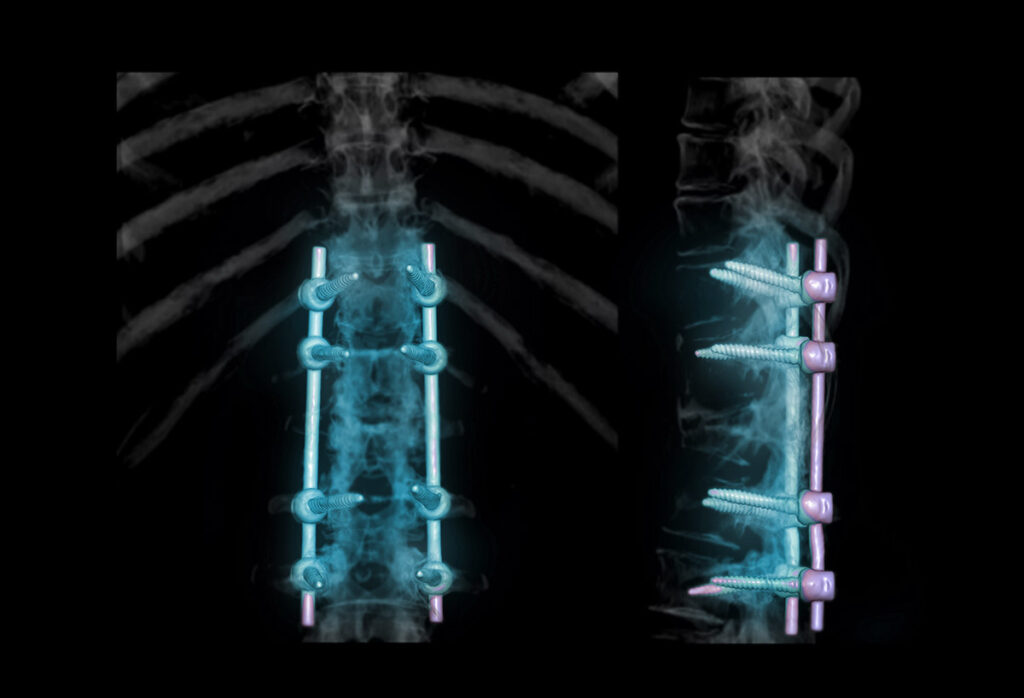

Physicians
Search

GENERAL INFORMATION
Spinal fusions come in different types and can help relieve symptoms of a range of back problems and spinal conditions. If the spinal fusion takes place in the lower back, it is referred to as a lumbar spine fusion and is only recommended when the source of the pain is identified. To help people make informed decisions for their health and dispel any concerns they have regarding spinal fusion surgery, we’ve provided the detailed information below.
A lumbar spinal fusion, or arthrodesis, is a surgical procedure that is used to treat problems with the vertebrae and can be described as a welding process. During fusion surgery, an orthopaedic surgeon fuses two or more vertebrae together so that they heal into a single, solid bone. The procedure helps to eliminate painful motion and improve the stability of the spine.
A lumbar fusion is a procedure that can treat several problems in the lower back and help relieve symptoms of:
Due to lower back pain having many potential causes, often not requiring spinal surgery, a doctor won’t pursue fusion surgery or any other spinal procedure until the source of the pain is identified. There are symptoms that you should discuss with your doctor to determine whether spine surgery is an option:
Preparing for lumbar fusion spine surgery often requires trimming body hair at the surgical site and cleaning the area beforehand. The surgical team may require monitoring unhealthy bacteria by taking a swab sample from within your nose and discussing the medications you’re taking, sometimes requiring a patient to stop taking certain medicines prior to surgery. You will also want to arrange for someone to take you home and assist you.
The lumbar spine fusion surgery involves three primary steps:
The surgeon will make an incision in either your back directly over the spine or on either side of your spine, sometimes through the abdomen to access it from the front.
The bone grafts fuse the two vertebrae together, often a bone within your body and usually the pelvis. If chosen from the pelvic bone, the surgeon makes an incision above your pelvis and removes a small portion of it before closing the incision.
The surgeon will place the bone graft between the vertebrae, using metal plates, screws, or rods to help hold them together while the bone graft heals. This healing will cause the vertebrae to heal into one larger bone.
Following the fusion spine surgery, you'll be required to stay in the hospital for two to three days for monitoring and care. Once released from the hospital, it may take several months for the spine to heal and fully fuse together. Your doctor may recommend wearing a brace until the spine correctly aligns and physical therapy to teach you how to move, sit, stand, and walk to keep your spine aligned correctly.